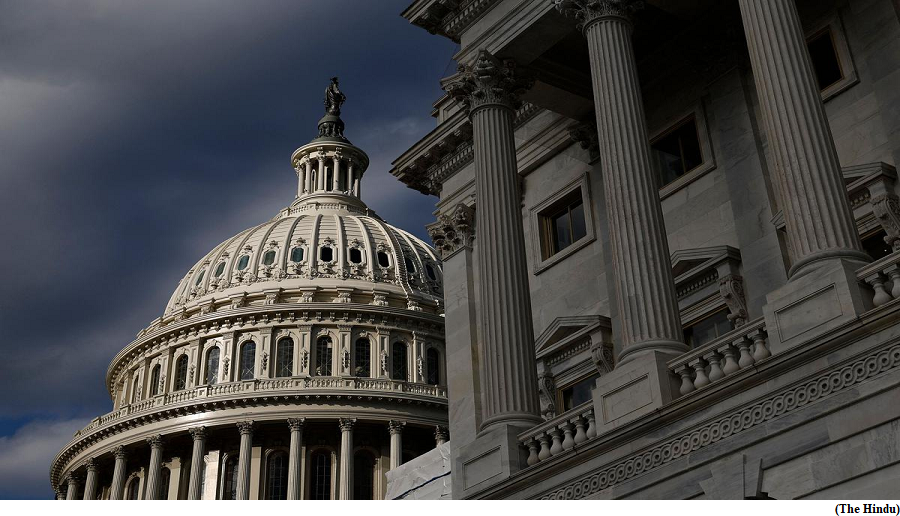UN Progress in tackling maternal as well as newborn deaths stagnant since 2015 (GS Paper 2, Social Justice)

Why in news?
- Despite over 4.5 million women and babies dying every year during pregnancy, childbirth or the first weeks after birth, global progress on mitigating this has halted since 2015, revealed a new report by the United Nations (UN).
Details:
- The report on improving maternal and newborn health and survival and reducing stillbirth placed India at the top, accounting for 17 per cent of global maternal deaths, stillbirths and neonatal births (788,000 total deaths).
- Pregnant women and newborns continue to die at unacceptably high rates worldwide, and the COVID-19 pandemic has created further setbacks to providing them with the healthcare they need.
How gains made between 2000 and 2010 were faster than they have been in the years since 2010?
- Maternal mortality ratio observed an annual reduction rate of 2.8 per cent between 2000 and 2009, which decreased to 1.3 per cent between 2010 and 2020.
- An improvement of reducing this indicator by 11.9 per cent is required in the next decade to meet global targets of an MMR equivalent to 70 deaths per 1,000 live births.
- Between 2000 and 2009, the stillbirth rate was reduced by 2.3 per cent and by 1.8 per cent between 2010 and 2021. A 5.2 per cent reduction is required between 2022 and 2030 to meet global targets of less than 12 stillbirths per 1,000 live births.
- Neonatal mortality rate (NMR) records a similar trend; a 3.2 per cent reduction between 2000 and 2009, 2.2 per cent reduction in 2010 and 2021. NMR needs to be reduced by another 7.2 per cent between 2022 and 2030 to meet the global target of ending newborn mortality.
What needs to be done?
- Following India, countries with the highest number of absolute maternal and neonatal deaths and stillbirths in 2020 are Nigeria (540,000 deaths), Pakistan (474,000), Democratic Republic of Congo (241,000), Ethiopia (196,000), Bangladesh (121,000), China (108,000), Indonesia (103,000), Afghanistan (95,000) and Tanzania (94,000).
- These maternal and infant health indicators can be improved significantly by ramping up essential health services.
- Three standard measures can be used to assess this availability; at least four antenatal care contacts (ANC4), having a skilled attendant at birth (SAB) and receiving postnatal care (PNC) within the first two days after birth.
- While coverage rates for ANC4 have improved to 68 per cent in 2022 from 61 per cent in 2010, the figure is projected to move up by only one percentage point by 2025.
- The same goes for SAB coverage rates, up from 75 per cent to 86 per cent in the same duration, and an expected improvement to 88 per cent by 2025.
- For PNC, the coverage has recorded the highest improvement, up from 54 per cent to 66 per cent between 2010 and 2022. It is further projected to touch 69 per cent by 2025. The projections make it clear that ANC4 and PNC coverage will fail to meet global targets at the current pace.
Emergency Obstetric Care:
- Access to quality Emergency Obstetric Care (EmOC) is critical for reducing maternal mortality.
- But only about 36 per cent of facilities providing EmOC in sub-Saharan Africa are considered functioning versus 62 per cent in northern Africa and western Asia and more than 80 per cent of EmOC facilities in other regions.
- Improvement on this front can significantly help reduce maternal deaths, a leading cause of which is postpartum haemorrhage, defined as the loss of more than 500 ml of blood within 24 hours after birth.
- A set of interventions to manage postpartum haemorrhage can reduce heavy bleeding by 60 per cent, a new study has revealed.
Gender transformative approach:
- A gender transformative approach can address maternal and newborn mortality. It is vital to stamp out the underlying factors which give rise to poor maternal health outcomes like socio-economic inequalities, discrimination, poverty and injustice.
What is the stalemate over the U.S. debt ceiling?
(GS Paper 3, Economy)
Why in news?
- The U.S. Treasury Secretary Janet Yellen notified Congress recently that the country could default on its debt as early as June 1, if the Republican-dominated House of Representatives and President Joe Biden’s White House did not reach a consensus to raise or suspend the debt ceiling.

What is the U.S. debt ceiling?
- When the federal government spends more than it brings in, it runs up a budget deficit. It then has to borrow money to meet its financial obligations, accruing debt.
- The government borrows by creating and selling debt securities like bonds to U.S. investors and companies, banks, pension funds, foreign investors and countries. The largest part of these are owned by the U.S. federal government itself, which keeps the money for social security schemes, medicare, federal pensions and so on.
- While the administration and Congress decide on taxation and spending, the collection of taxes and the borrowing of funds is done by the U.S. Treasury Department.
Second Liberty Bond Act:
- In 1917, Congress passed the Second Liberty Bond Act, to allow then-President Woodrow Wilson to take out funds for the First World War without waiting for the approval of absent Congress lawmakers.
- However, the Congress created a limit on borrowing ($11.5 billion at the time), thus creating a debt ceiling that could only be raised by the approval of the Congress (House and Senate).
- The U.S. government has hit or come close to hitting the debt ceiling multiple times. Congress has acted 78 separate times since 1960 either to permanently raise, temporarily extend, or revise the definition of the debt limit.
- While the government continues to receive taxation revenue after hitting the debt ceiling, it cannot borrow any more to pay its existing bills. The U.S. would then be unable to pay its debt-holders, resulting in a default.
Why have debt ceiling standoffs become a recurring issue?
- Congress approves programmes for which it does not have the entire funding, and then there’s a limit on how much the Treasury can borrow to pay for these already approved programmes. Take this analogy, for instance: if Congress approves $100 of spending, $70 comes from taxes but the cap on what the government can borrow to pay for the rest is fixed at a mere $15.
- Another reason why disagreements over the debt limit happen often, almost annually since 2011, is that it has become a political bargaining chip, as any raise or suspension has to be approved by Congress. As American politics becomes increasingly polarised, the Opposition has often used the debt limit as a way of getting budgetary and other legislative concessions.
- The U.S. came dangerously close to defaulting on its debt in 2011 when the Republicans and the Obama administration could not reach an agreement to hike the ceiling till the last minute. Observers have called the current impasse between House Republicans and the Biden administration even messier than in 2011.
- The Republican Speaker Kevin McCarthy-led House passed a Bill that pairs a $4.8 trillion in spending cuts with an increase in the current $31.4 trillion debt ceiling. However, U.S. President wants a clean debt-ceiling hike and won’t negotiate any kind of cuts, resulting in the current deadlock.
What will happen if the U.S. defaults?
- Analysts say there is no set post-default scenario since the U.S. has never actually defaulted on its debt before. They have warned, however, of a “catastrophic” situation for American and global financial markets.
- If the government cannot make interest payments to domestic and foreign investors who own its debt securities, it could plunge the globe into a financial crisis.
- The “unthinkable” event of a U.S. default could lead to another downgrade of U.S. creditworthiness by agencies, large-scale job losses, weakening of the dollar, stock sell-offs, and a rise in the cost of borrowing for the U.S. government.
Ministry of Power & Ministry of Environment, Forests & Climate Change to develop Carbon Credit Trading Scheme for Decarbonisation
(GS Paper 3, Environment)
Why in news?
- The government plans to develop the Indian Carbon Market (ICM) where a national framework will be established with an objective to decarbonise the Indian economy by pricing the Green House Gas (GHG) emission through trading of the Carbon Credit Certificates.
- Bureau of Energy Efficiency, Ministry of Power, along with Ministry of Environment, Forest & Climate Change are developing the Carbon Credit Trading Scheme for this purpose.

Scope:
- As India currently has an energy savings-based market mechanism, the new avatar Carbon Credit Trading Scheme will enhance the energy transition efforts with an increased scope that will cover the potential energy sectors in India.
- For these sectors, GHG emissions intensity benchmark and targets will be developed, which will be aligned with India’s emissions trajectory as per climate goals. The trading of carbon credits will take place based on the performance against these sectoral trajectories.
- Further, it is envisaged that there will be a development of a voluntary mechanism concurrently, to encourage GHG reduction from non-obligated sectors.
Key Highlights:
- The ICM will develop methodologies for estimation of carbon emissions reductions and removals from various registered projects, and stipulate the required validation, registration, verification, and issuance processes to operationalize the scheme. Monitoring, Reporting, Verification (MRV) guidelines for the emissions scheme will also be developed after consultation.
- A comprehensive institutional and governance structure will be setup with specific roles of each party involved in the execution of ICM. Capacity building of all entities will be undertaken for up-skilling in the subject matter.
- The ICM will mobilize new mitigation opportunities through demand for emission credits by private and public entities.
- A well-designed, competitive carbon market mechanism would enable the reduction of GHG emissions at the least cost, both at the level of entity, as well as the overall sector and drive faster adoption of clean technologies, in a growing economy like India.
Way Forward:
- India has been at the forefront of climate action to meet the climate goals through its ambitious Nationally Determined Contributions (NDC).
- To facilitate the achievement of India’s enhanced climate targets and to meet the future goals, the government is developing the ICM.
- By accelerating the transition to a low carbon economy, the ICM will facilitate achieve the NDC goal of reducing Emissions Intensity of the GDP by 45 percent by 2030 against 2005 levels.




